Related Flashcards
Cards In This Set
| Front | Back |
|
Length of sumerian time period
|
C 3500-2600 bc
|
|
4 things sumerians developed
|
Religion, riting, food production, theories of kingship
|
|
Where, characteristics of land
|
Fertile crescent, mesopotamia, grassy uplands, rivers allowed e-z transport, flat, rivers only natural boundariies.
|
|
Form of gov't
|
City-state :all city members and surrounding countryside form political body; theocratic socialism: each city state belongs to separate god
|
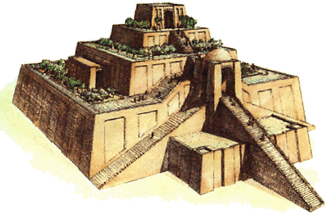 Name, date, way of approaching temple, |
White temple at uruk, c.3000,bent axis approach
|
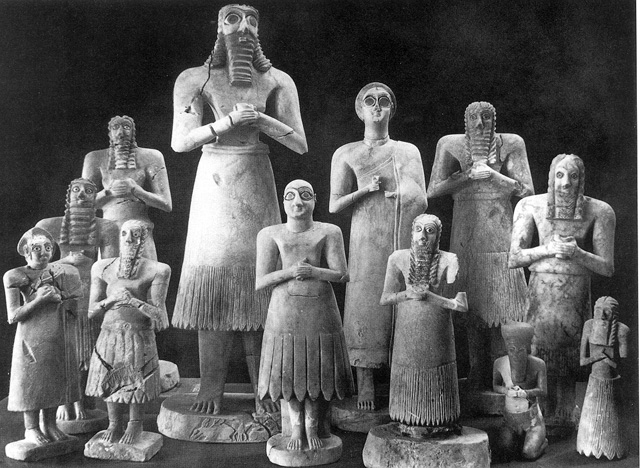 Name, where, date, significance of sizing, why were statuettes in temple? important features, compare to venus of w. |
Tell asmar statues, c.2700, size indicates importance, statues substituted real people (people couldn't stay in temple 24/7 to worship so statues substituted people), large eyes (eyed window to soul), clean geometric shape- oppostite of voluptous exaggerrated form of venus of willendorf
|
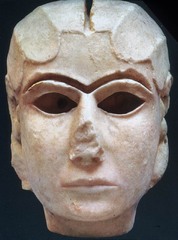 Name, date, eyebrow made of, what is missing from head?,what two artistic styles does it show? |
White head from uruk, c.3500, eyebrow made of lapis lazuli, what is missing: eyebrow, eyes, metal wig, gold jewelry, two styles:upper half of face is rigid and abstract and lower half of face is soft and realistic
|
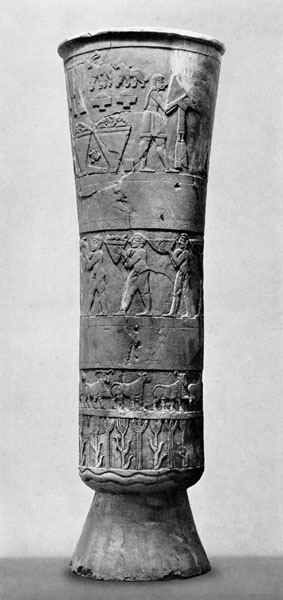 Name, from, when, made of |
Warka vase, uruk, 3200-3000, white stone
|
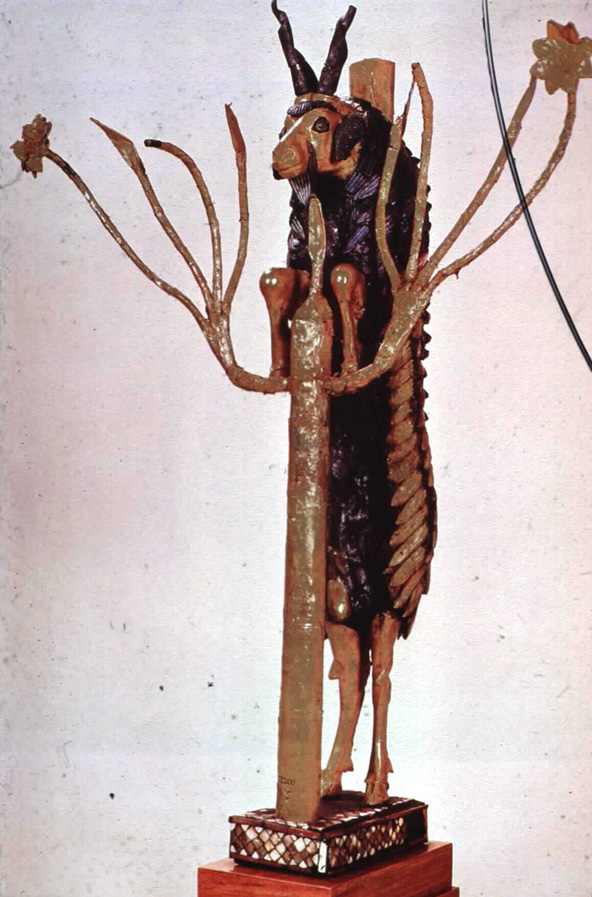 Name, date, purpose, made of, shapes on statue resemble what? |
Votive statuette of ram, c. 2700, to show gratitude or serve as bribe to a god, made of wood covered in gold and lapis lazuli, flowers on ram resemble sumerian jewelry
|
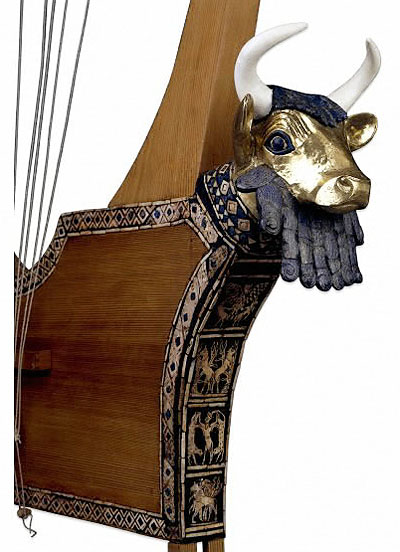 Name, date, found where, images on front of object |
Sumerian harp, c.2600, found in women's tombs, illustrations on front of harp box depict human-animal figures
|



